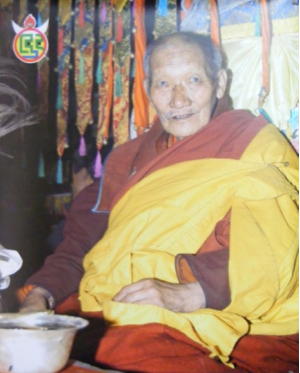
Khyungtrul passed away in 1955, having by then passed on all the duties of running the monastery to his principal student Tenzin Wangdrag. He had met Tenzin Wangdrag in 1942 when on pilgrimage at Mt Kailash. On meeting Khyungtrul, Tenzin Wangdrag thought that he was in the presence of the famous 7th century Bon master Tapiritsa, while Khyungtrul was very happy to have met such a learned gelong (the Tibetan term for a fully ordained monk). Tenzin Wangdrag subsequently became Khyungtrul's main assistant and spiritual heir. Tenzin Wangdrag also studied medicine under Khyungtrul, and after Khyungtru's passing he continued to teach and practice medicine at Gurgyam monastery.
During the Cultural Revolution the monastery was completely destroyed, and all the texts and religious objects were lost. In the 1980s it was rebuilt by Tenzin Wangdrag who by this time had a prominent position in Senge Khabab, the Tibetan medical hospital in Ali, the main town of the Ngari region of west Tibet. He put all the money he earned from this position into building a hospital at Gurgyam which is still presently in operation. In 2009 there were eight monks staying at the monastery, six of whom had been trained as doctors of Tibetan medicine by Tenzin Wangdrag.
In 1997, with the help of a Swiss charity , the Tibetan Association Ngari Korsum, and under the direction of Tenzin Wangdrag, a large Tibetan medicine factory, a clinic, and a medical school were established in the village of Darchen, at the starting-point of the pilgrimage route around Mt Kailash. Since that time two cohorts of around fifty medical students have graduated from the school.
Tenzin Wangdrag himself died in late 2007, but the monastery and the medical institutions continue to flourish. In September 2010, a new cohort of thirty students commenced the course at the medcial school.